Can You Grow Tomatoes Indoors? Tips, Tricks, and How-To Guide
-
Codee Chessher
- Last updated:
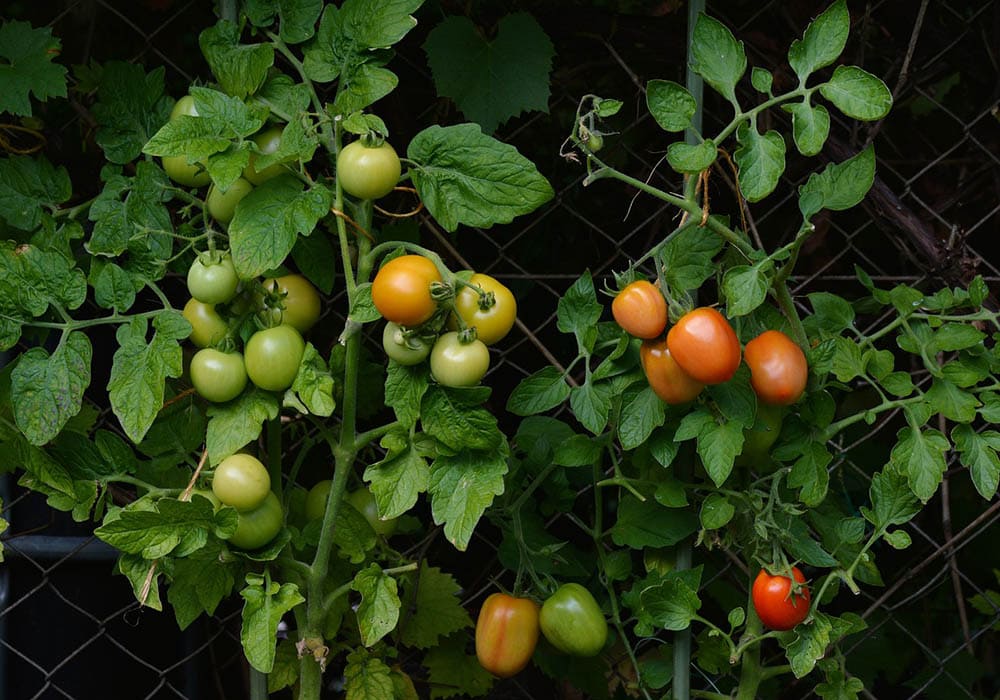
Outdoors and in nature, tomatoes are a warm-season crop that dies when the ambient temperature gets too low. Indoors or in a greenhouse, however, you can grow tomatoes any time of the year. Want a fresh tomato at Christmas dinner this year? You’d better get planning because growing indoors takes some unique preparation and work not needed for outdoor plants.
Let’s check out how growing tomatoes indoors works, how it works, and tips you can utilize to enhance your plant’s bounty.
Before You Start
First, you need to be aware of what tomatoes need to grow and produce fruit. Tomatoes, like other plants, derive their nutrition from soil nutrients and most critically, turn sunlight into food via photosynthesis. Without sunlight, they’ll die. Even too little sunlight can result in a weak plant with spindly vines and little to no fruit.
They require 8 full hours of sun a day, and they need ambient temperatures between 65 to 80 degrees Fahrenheit. We would suggest using natural sunlight, if at all possible. Southern facing windows are ideal, but you know your home and locale better than we do, so use your judgment. Your home will need to be equipped with climate control, and you’ll have to figure out how to get your plant adequate light.
Not only are indoor grow lights expensive, but they’re also a hassle to program and fiddle with. They also raise your electricity bill by a surprising amount, so watch out if you decide to go that route. Many areas don’t get enough sunlight during the winter, so grow lights may be required.
Hydroponics is another option but might be cost-prohibitive depending on your situation. If you’re still interested in growing after your first batch is grown, it may be worth looking into for future plants. For now, let’s stick to soil.
Finally, you’ll need to research and choose a type of tomato that grows well indoors. Generally, that means you’re looking at smaller, compact plants that produce smaller fruit. Dwarf tomatoes are a good suggestion, and Red Robins are a great choice for beginners.
- Tomato seeds
- Adequate sunlight via windows or LED grow light
- Pot with drainage holes
- Stakes
- Potting mix
- Water
- Compost/fertilizer (optional, but very helpful!)
The 5 Steps to Grow Tomatoes Indoors
1. Plant Your Seeds
You can start your seeds by wrapping about five in a wet paper towel and waiting until they begin to sprout, also known as germinating. Then, mix your potting soil with a bit of fertilizer or compost (according to directions!) and plant your seeds a ¼” in the soil.
While your plants are young, they’re very vulnerable and need attentive care. Keep the soil moist, but not flooded. Ideally, you’ll have a vessel underneath your pot to catch drainage water. Allow your soil to dry out, but not get parched, and then rewater.
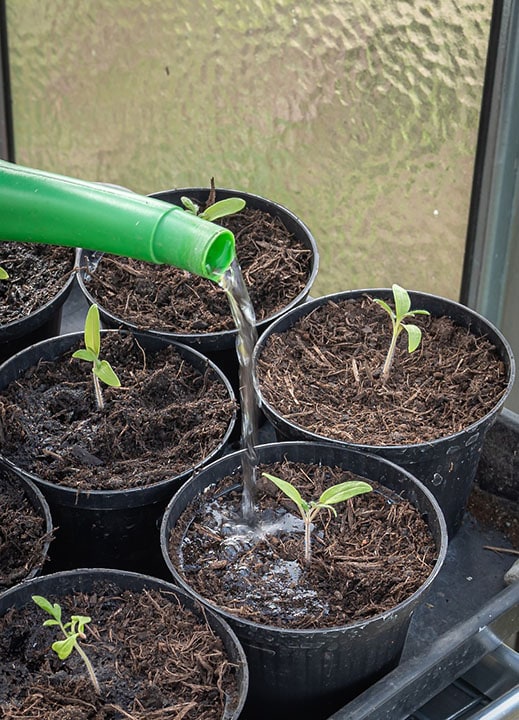
2. Stake Your Plants
For optimal growth and fruit production, you’ll want to stake your plants. Tomato cages are one alternative that works very well for cramped spaces, but stakes are better because they give the plant more room to grow.
Plant stakes in your pot and tie twine around the vines to secure them to the stake. This helps the plant learn how to grow on a stake, and it should naturally grow up and around the stake. Make sure your stake is tall enough to accommodate your tomato plant when it reaches maturity and sturdy enough that the plant won’t be strained when it fruits.
We recommend pruning your tomato plant to a single stem so that the fruit all grows along the same stem. Multiple stems get complicated unless you have a very large pot that you can plant multiple stakes in.
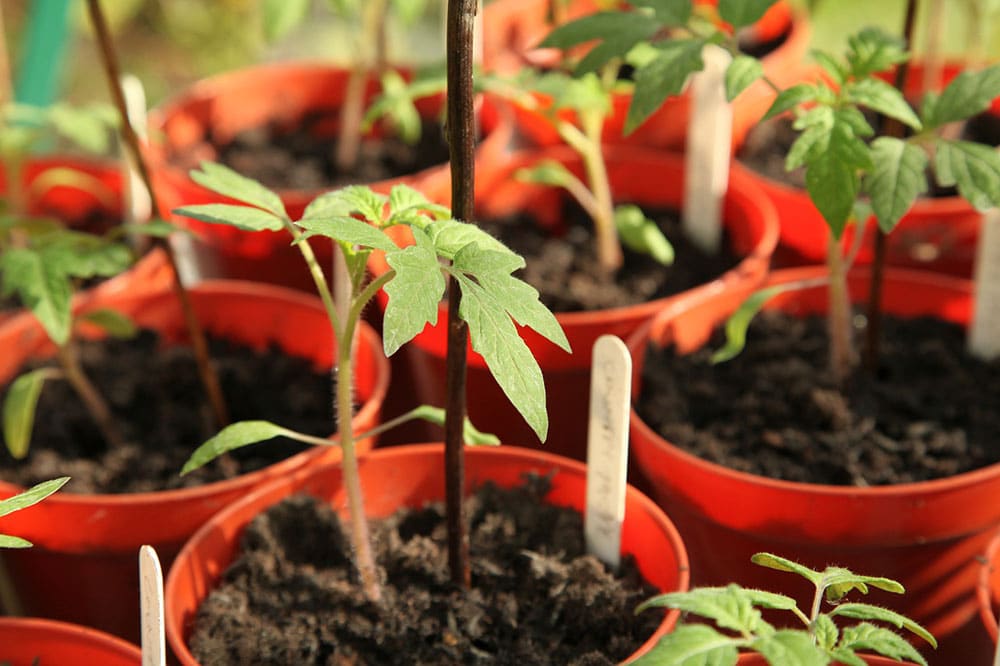
3. Pollinate The Plant
Tomatoes need pollination to produce fruit. Unless you also happen to be a beekeeper, you have to do it yourself. Manual pollination is relatively easy, but it’s essential. When your tomato plant begins to bloom, tap the stems gently to release pollen. If the plant isn’t pollinated, it won’t fruit, so make sure you do this as soon as the plant blooms.
Also, you should regularly turn your tomato plant so every part of it gets a roughly even amount of sunlight. If you don’t, some parts of the plant can end up underdeveloped and drain nutrients it needs to fruit soon.
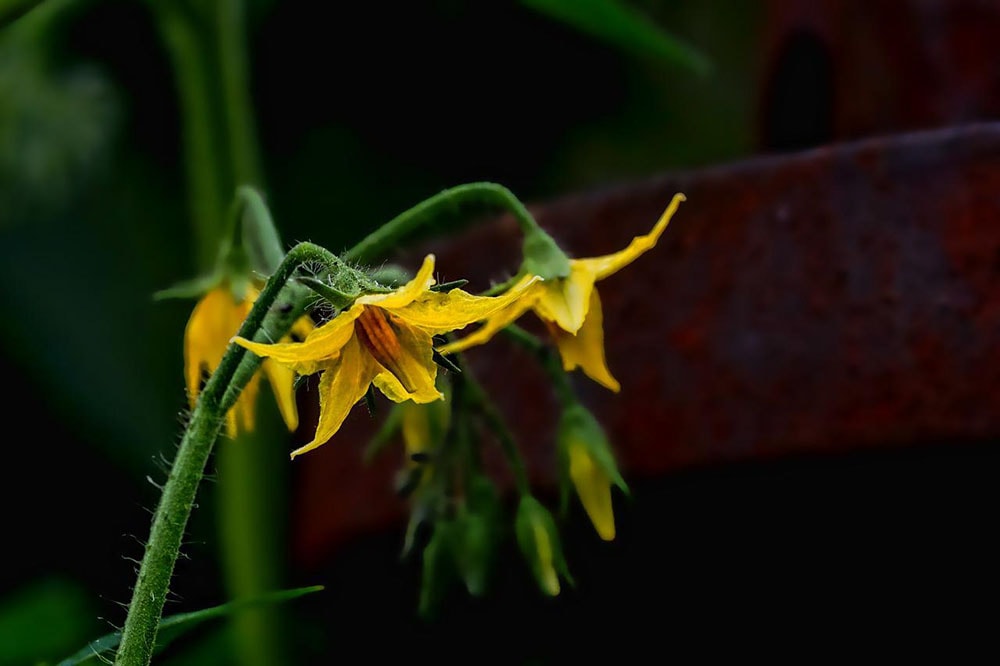
4. Harvest!
After all that time-consuming work, your tomato plant is finally laden with plump, juicy tomatoes. Indoor plants produce fruit at about the same pace as outdoor plants, assuming you’ve provided them with everything they need to thrive.
You can test if your tomatoes are ripe for harvesting by lightly squeezing them. If they’re firm and the fruit has begun to bloom red, it’s harvest time! Pick your tomatoes right off the vine and store or cook them as desired.
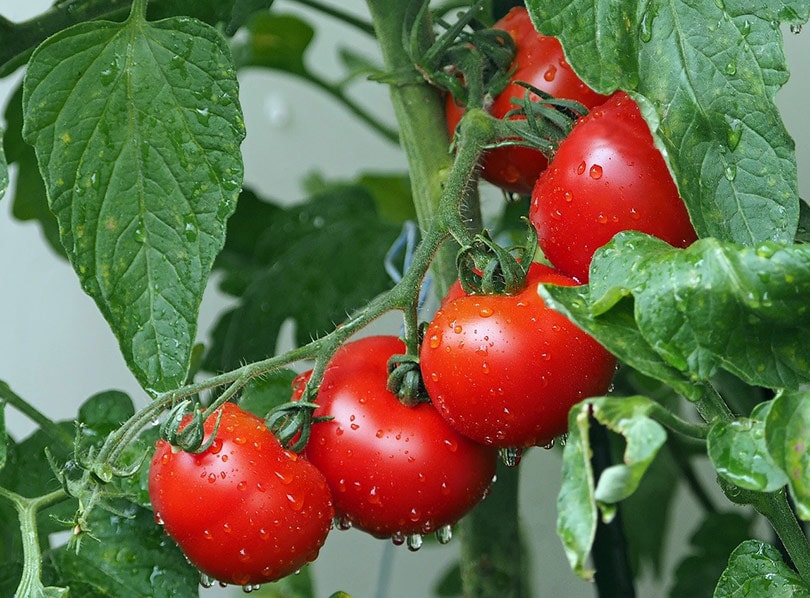
5. Prepare For Next Season
You can continuously grow tomatoes year-round, so don’t ditch your plant just yet. If you want a steady supply of yummy tomatoes, it might be time to consider expanding your indoor garden to include more tomato plants.
Most people plant tomatoes indoors around midsummer, and then they start again after the new year. This doesn’t mean you have to keep the same schedule, though. Feel free to plant whenever you’d like, as long as there’s enough light for the plant and the temperature is comfortable.
Conclusion
Tomatoes are some of the most delicious produce you can grow yourself, and nearly anyone can grow them indoors year-round with the right planning and equipment. With experience, you can have a rotating crop of different tomato species.
You May Also Like:
- Can Basil Grow Indoors? Tips, Tricks, and How-To Guide For Growing
- Can You Grow Eucalyptus Indoors? Tips, Tricks, and How-To Guide
- Do Tomatoes Like Acidic Soil? What pH Do They Prefer?
Featured Image Credit: congerdesign, Pixabay
Contents
